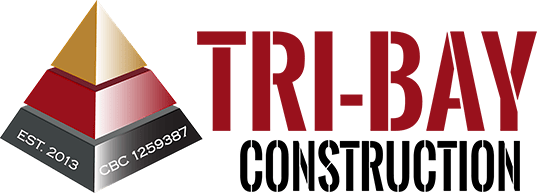As promised in our last issue, this month’s discussion explores the value of consultations with experts and the myriad of problems that can occur when work is performed without proper permits. Let’s first define “Authority Having Jurisdiction.” Simply put, these are the entities that make the rules for a geographic area.
Following the rules is a far more involved (some say complicated) process than some choose to go through. One of the difficulties is that the rules for following the procedures in place for any given area may differ significantly from an adjacent geographic area. There is a myriad of reasons for the differences, which are not always clear to the public.
Like most rules for any organization, they can be based on:
Above all, most of the regulations are put in place to protect the general public from the contractor’s errors and prevent the contractor from making errors that may be dangerous to the public.
The Division of Building Safety and the Fire Marshall’s office are often seen as entities that cost business owners and homeowners money. Quite the opposite is true. While some disagree with how the rules are interpreted, derived, and even implemented, that is fodder for another discussion. Today, we deal with following the rules in place and why following the rules is less costly in the long run.
Let’s look at one case scenario for a commercial building. A business owner occupies part of a warehouse-type building.
The business is rapidly growing, and the remainder of the building becomes available for lease. The business owner and building owner strike a deal and sign a lease for the business owner to take over the rest of the building. Without permits the business owner makes “improvements” to his added space to include new equipment for his operations, structures for new equipment, openings in the walls between the units, even a new overhead door in the building structure. A friend who is an electrician adds another circuit breaker to the electrical service and the business has grown so much that the business owner has hired ten new employees. All of these improvements “had to be done” but hiring an Architect, Structural Engineer, Electrical Engineer, obtaining plans, hiring a contractor, getting inspections on the new work would “cost too much” and “take up valuable time.”
The business owner is now operating at double his capacity and everything seems to be fine. Then the Fire Inspector comes to the building to perform an annual inspection. The fire inspector notices several items that require correction. The building owner doesn’t take care of these items right away so when the fire inspector returns (standard operating procedure) and sees that the corrections were not made, the Building Department is notified, and a building inspector visits the building. The building inspector observes some “improvements” that do not meet current building codes and are potentially unsafe. He makes a note of the items and upon searching the building’s records, sees that permits have not been obtained for much of the observed new work. Here is where the situation grows exponentially worse.
Because of the code violations, the Fire Marshall and the Building Inspectors perform a more thorough inspection. This produces a much more extensive list of violations that are now recorded. Some are new and some may have existed before this business owner leased the space. A timeline is given to the business owner to correct the violations. The business owner will now be required to submit a Permit application with signed, sealed plans drawn by a licensed architect and appropriate Engineers or risk closing the operation entirely.
Some additional time lapses because the building owner cannot find the time to address these issues, which he knows will interrupt his business and likely cost money that has not been budgeted. The Building Official and Fire Marshall return to the building, observe that the requested corrections have not been made, and some additional work has been performed without a permit since the last visit. The Building Official and the Fire Marshall decide (rightfully so) that there are enough unsafe conditions that they shut the business down completely.
While this is an extreme case scenario, what was likely a few thousand-dollar problem, has now become a tens of thousands of dollars problem, including:
Even if the building was not declared unsafe by the authorities having jurisdiction, the unsafe conditions might have eventually caused a severe preventable injury to one of the employees, which cannot be “fixed” with money.
While this may be an extreme case, many examples of the unexpected cost of doing work without permits or licensed contractors exist every day. We cannot put a dollar value on someone’s life and well-being, be it an employee or the general public. Once an injury or death occurs, it cannot be reversed. Architects and Engineers are educated and licensed to design buildings and workspaces that are safe for all. Building Codes and Permitting regulations are in place for the safety and well-being of employees and the public.
Contractors are licensed to work with these Architects, Engineers, building officials, and Fire Departments and are responsible (morally, ethically, and financially) to provide safe work and living spaces for all. While saving a few dollars and some time may appear to be the best route to take and may provide a short-term benefit, the long-term consequence could mean the loss of life and less importantly, exponentially more expensive to correct the problem. Unlicensed work and unpermitted work are always more expensive (figuratively and literally) in the long run.

